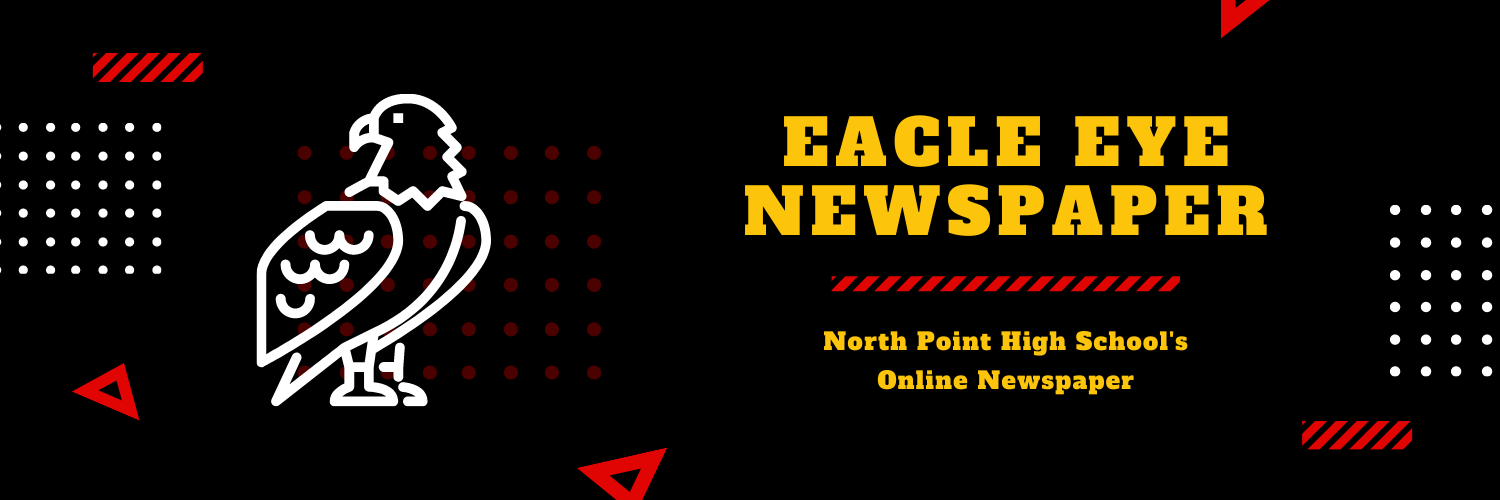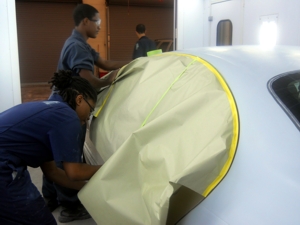The Collision Repair Science, Technology and Industry (STI) Program here at North Point is quite similar to a regular body shop. The students learn how to fix many different body problems of cars, such as dents, frame misshaping, and scraped paint. The students learn everything that is done in a typical body shop.
The program also operates as a regular body shop. The students work on cars that belong to customers rather than donated cars. The customers are charged for the materials used, not for the labor that goes in to fixing the vehicle. All of the profits from customers go back into the Collision Repair STI.
The students learn how to use various tools in the program, including paint guns, body specialty tools grinders, hand tools and dual action sanders. As a part of the curriculum the students also learn to weld. The program has its own welding lab.
The students have a strict dress code when working in the lab. Students are required to wear jumpsuits when painting, but otherwise they only have to wear a work shirt, jeans, and work boots. Protective eyewear is required at all times when the students are in the lab. Full face mask are required whenever a student is welding.
The class is made up of 15-20% in-classroom learning from the curriculum, while the other 80-85% of the class is all in the lab, applying what they have learned in class and fixing cars brought in by customers. The program uses the iCar Advanced Technology Curriculum. The class does not use textbooks; instead the students are given worksheets and notes from the curriculum and put them in a separate notebook.
The program is quite similar to being in the real world. “It’s like work,” commented Jeremy Remalia (’12). Though the students don’t get paid for working on the cars now, it can lead to many careers. Students can go into the workforce as collision repair specialist or painters and refinishers in body shops.
Many of the students enjoy being in the program. “Its fun,” said Ray Roberts (’12). Majority of the students in the program plan on working with cars in their career and feel that the program is preparing them greatly. “It’s getting me ready for the workforce,” said Michael Jones (’12).
Many of the students agree that the best part of the program is the painting.“You can put your own style into it,” commented Remalia. The students all said that one big aspect of their work in the program is making sure everything is done up to par and the customer’s satisfaction.



